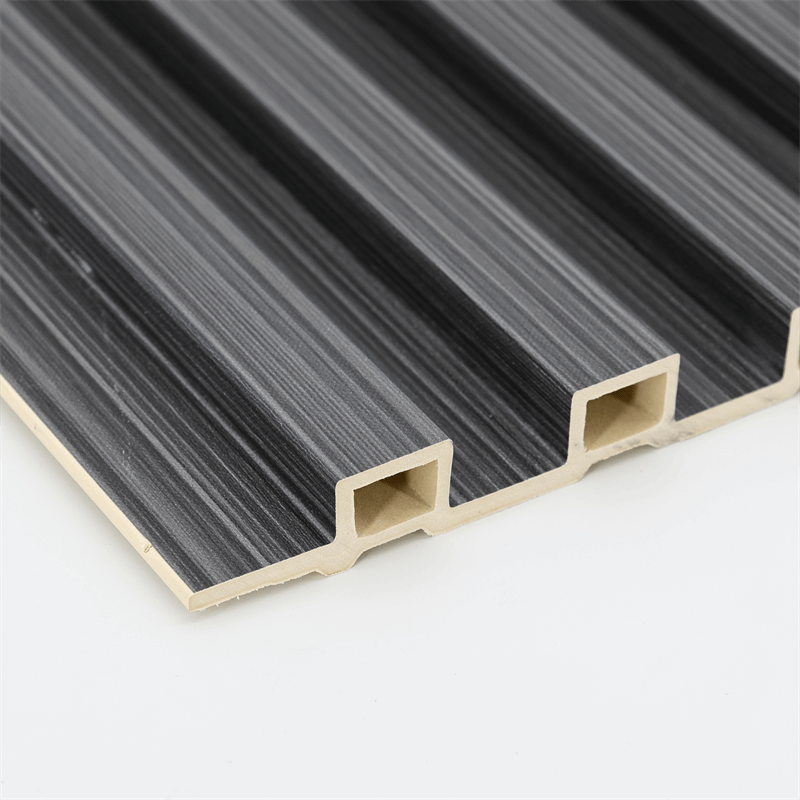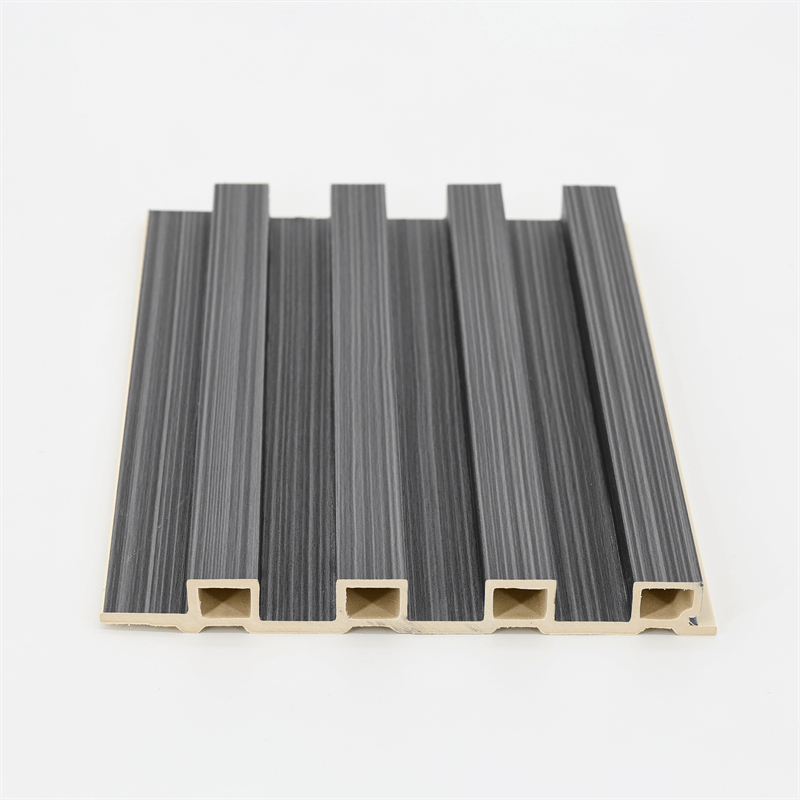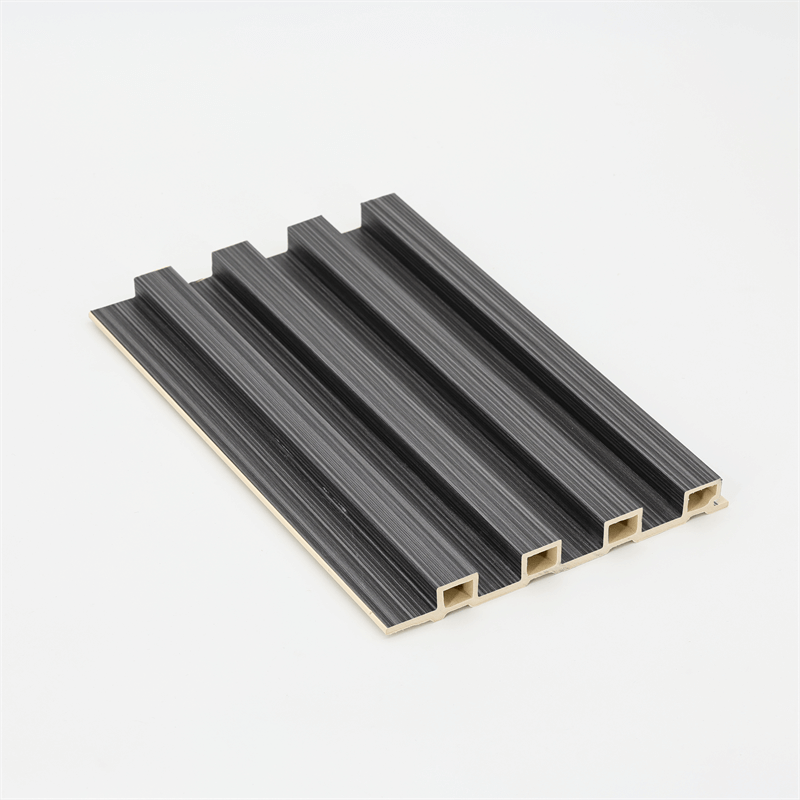In recent years, there has been a growing emphasis on sustainable building materials and practices.
As a result, WPC (Wood-Plastic Composite) wall panels have gained significant popularity as a sustainable and stylish choice for both residential and commercial spaces.
This essay explores the advantages of WPC wall panels, highlighting their environmental benefits, aesthetic appeal, durability, and ease of installation.
I. Environmental Benefits of WPC Wall Panels
WPC wall panels offer several environmental advantages, making them an eco-friendly choice for conscientious builders and homeowners.
Sustainable Material: WPC wall panels are composed of a combination of wood fibers and recycled plastics, reducing the reliance on virgin materials.
By utilizing recycled content, these panels help conserve natural resources and reduce waste.
Reduced Carbon Footprint: The production of WPC wall panels emits fewer greenhouse gases compared to traditional materials such as solid wood or concrete.
This reduction in carbon emissions contributes to mitigating climate change and promoting sustainable construction practices.
Low Toxicity: Unlike some conventional building materials that may contain harmful chemicals, WPC wall panels are typically free from hazardous substances such as formaldehyde or volatile organic compounds (VOCs). This ensures a healthier indoor environment for occupants.
II. Aesthetic Appeal of WPC Wall Panels
Apart from their environmental benefits, WPC wall panels also offer a wide range of design options to enhance the aesthetic appeal of any space.
Versatile Designs: WPC wall panels come in various colors, textures, and patterns, allowing for endless design possibilities.
Whether you prefer a contemporary, rustic, or traditional look, there is a WPC panel to suit your style.
Natural Wood-like Appearance: One of the key advantages of WPC wall panels is their ability to mimic the look and texture of real wood.
This provides the warmth and charm of wood without the associated maintenance requirements or susceptibility to moisture damage.
Customizable Finishes: WPC wall panels can be easily customized to meet specific design requirements.
They can be painted, stained, or coated to achieve the desired finish, giving architects, designers, and homeowners greater flexibility in creating unique and personalized spaces.
III. Durability and Longevity
WPC wall panels are known for their exceptional durability, making them a reliable choice for both interior and exterior applications.
Moisture Resistance: Unlike traditional wood panels, WPC panels are highly resistant to moisture, making them ideal for areas prone to high humidity, such as bathrooms and kitchens.
This moisture resistance also prevents issues such as rotting, warping, or swelling, ensuring long-lasting performance.
UV Resistance: WPC wall panels are engineered to withstand exposure to ultraviolet (UV) radiation without fading or discoloration.
This characteristic makes them suitable for outdoor applications, where they can maintain their aesthetic appeal even in harsh weather conditions.
Impact Resistance: The combination of wood fibers and plastic in WPC wall panels results in a material that is stronger and more impact-resistant than traditional wood.
This durability makes them less susceptible to damage from accidental impacts, ensuring a longer lifespan.
IV. Ease of Installation and Maintenance
WPC wall panels offer ease of installation and require minimal maintenance, providing convenience to builders, contractors, and homeowners alike.
Simple Installation: WPC wall panels are designed for easy installation, often utilizing a tongue-and-groove system or concealed fasteners.
This allows for quick and efficient installation, saving both time and labor costs.
Low Maintenance: Unlike natural wood, WPC wall panels do not require regular painting, staining, or sealing.
They are easy to clean and maintain, requiring only occasional washing with mild soap and water to keep them looking their best.
This low-maintenance characteristic is especially appealing to busy homeowners or commercial property managers.
Long-Term Cost Savings: The durability and low maintenance requirements of WPC wall panels result in long-term cost savings.
The absence of frequent repairs, replacements, and maintenance expenses make them a cost-effective choice over the lifespan of a building.
WPC wall panels offer a sustainable and stylish choice for modern construction.
Their environmental benefits, aesthetic appeal, durability, and ease of installation and maintenance make them a viable alternative to traditional materials.
By opting for WPC wall panels, builders and homeowners can contribute to sustainable building practices while creating visually appealing and long-lasting spaces.
As the demand for eco-friendly and innovative construction solutions continues to rise, WPC wall panels are likely to remain a popular choice for those seeking sustainable and stylish design options.
Furthermore, the use of WPC wall panels aligns with the principles of circular economy and waste reduction.
The incorporation of recycled plastics in the manufacturing process helps divert plastic waste from landfills, reducing environmental pollution and promoting resource efficiency.
This not only contributes to the sustainability of the construction industry but also encourages a shift towards a more circular and responsible approach to material usage.
Another notable advantage of WPC wall panels is their ability to improve the thermal performance of buildings.
The combination of wood fibers and plastic creates a natural insulation barrier, reducing heat transfer and enhancing energy efficiency.
This can lead to lower heating and cooling costs, ultimately saving both energy and money for homeowners and building occupants.
By opting for WPC wall panels, individuals can contribute to reducing their carbon footprint and promoting sustainable energy practices.
In addition to their functional benefits, WPC wall panels also offer excellent sound insulation properties.
The dense composition of the panels helps to minimize sound transmission, making them an ideal choice for spaces where noise reduction is desired, such as office buildings, hotels, or residential apartments.
This acoustic performance contributes to a more comfortable and peaceful indoor environment, enhancing the overall quality of life for occupants.
Moreover, WPC wall panels exhibit excellent resistance to pests, such as termites or fungal growth.

Unlike natural wood, which is susceptible to infestations and decay, WPC panels are not a food source for pests, ensuring the longevity and structural integrity of the panels.
This durability makes them particularly suitable for areas with high moisture levels or regions prone to insect activity, where traditional materials may be vulnerable to damage.
It is worth noting that the advantages of WPC wall panels extend beyond their individual characteristics.
The adoption of these panels can have a positive impact on the broader environment and society.
By choosing sustainable building materials like WPC, architects, builders, and homeowners can contribute to the reduction of deforestation and environmental degradation associated with the extraction of traditional timber. This promotes responsible forestry practices and conservation efforts, preserving valuable ecosystems and biodiversity.
Furthermore, the growing demand for WPC wall panels stimulates innovation and investment in sustainable technologies, fostering the development of a greener construction industry.
Manufacturers are continually exploring ways to improve the manufacturing process, enhance the performance of WPC materials, and incorporate even higher percentages of recycled content.
This ongoing research and development contribute to the advancement of sustainable practices and the evolution of the construction sector as a whole.
In conclusion, WPC wall panels offer a plethora of advantages that make them a sustainable and stylish choice for both residential and commercial applications.
Their environmental benefits, aesthetic appeal, durability, ease of installation and maintenance, thermal and acoustic performance, and resistance to pests position them as a compelling alternative to traditional materials.
As the world continues to prioritize sustainability, embracing innovative solutions like WPC wall panels can significantly contribute to the reduction of environmental impact and promote a greener and more resilient built environment.
By embracing these sustainable choices, we can create spaces that are not only visually appealing but also environmentally responsible, ensuring a brighter future for generations to come.


